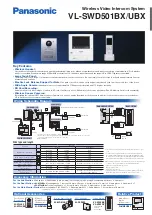
10–6
Troubleshooting
Publication 1747-6.2
The Following
Error Exists
Probable Cause
Recommended Action
System
Inoperable,
No Major CPU
ault t ct
User Program
Logic Error
1. Monitor logic in Run mode and verify desired I/O
status.
2. Check for minor CPU faults.
Refer to either the Hand-Held Terminal User Manual
(Catalog Number 1747-NP002) or your programming
software user manual
Faults Detected
Defective I/O
Devices or I/O
Wiring
Test inputs and outputs according to I/O troubleshooting
procedures starting on page 10–26.
The Following
Error Exists
Probable Cause
Recommended Action
CPU Memory
Error
Cycle power.
PU ault
Faulty Memory
Module
1. Remove power and then remove the memory module
from the processor.
2. Re-install the processor and re-apply power to the
power supply
If steady CPU FAULT LED changes to flashing, replace the
existing memory module with a replacement module.
Refer to chapter 6 for removing and installing memory
modules.
CPU Fault
Faulty CPU/Power
Supply
1. Place the processor in another chassis not in the
existing system and cycle power.
If steady CPU FAULT LED reappears, replace the
processor.
2. If CPU FAULT LED clears, monitor the line power
going to the power supply in existing system.
3. Replace existing system power supply if line power
checks OK.
Processor
Firmware Installed
Incorrectly
If upgrading the processor to a different firmware level,
verify firmware chip orientation matches the upgrade kit
directions.
Refer to the following key to determine the status of
the LED indicators:
Indicates the LED is OFF.
Indicates the LED is ON.
➀
The RUN LED on the SLC 5/01 processor is
actually labeled “PC RUN.” Also, the
SLC 5/01 processor does not have a COMM
LED.
Indicates the LED is FLASHING.
Status of LED does not matter.
POWER
RUN
CPU FAULT
FORCED I/O
BATTERY LOW
COMM
If the LEDs indicate:
➀
POWER
RUN
CPU FAULT
FORCED I/O
BATTERY LOW
COMM
If the LEDs indicate:
➀














































